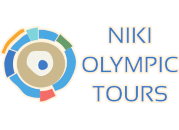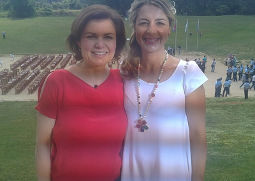Super User
Monastiraki
Monastiraki is a famous district of Athens that extends from the Monastiraki square at the end of Athinas street until Thission, Monastiraki is a large part of the district of Plaka. The old name of the area was Monastirion because of the small church right on the Monastiraki square the today's church of Koimisis Theotokou. At the square you will find the Monastiraki Athens Metro station and the main entrance to the flea market.
In the old days the flea market it was called Yousourum from the name of a rug and bones man that he first made his business there, Stavros Xarhakos made a wonderful Greek popular song the famous "Yousouroum" during the 60's. The main flea market of Athens is at Avyssinias square at the end of Hephaestou street. Along Hephaestus street you will find mainly various shoe shops, clothing shops and music stores. In the same street within the arcades there are some good second hand book stores.
Along the Adrianou street facing the Acropolis and the Attalos stoa is one of the best places for relax and enjoy the scenery at one of the numerous cafes and restaurants in this area is located the church of Agios Phillipos with its clock that bells every hour. From the Monastiraki square after the old mosque that today hosts a ceramic collection, towards Areos street is the Roman Library of Hadrian. Following that street and turning to the left at Dexipou street you will get to the monument of the bath of the winds or Aerides.
Plaka
Plaka is the historic heart of Athens, located to the north of the Acropolis. Next to Plaka are the districts of Monastiraki and Thissio, popular with tourists and Athenians alike.
Gentrified during the 1990s and now very popular with tourists, Plaka is a charming historic district at the foot of the Acropolis, with its restored 19th century neoclassical homes, pedestrianized streets, shops and restaurants, and picturesque ruins from the city's Roman era. Thissio, to the west side of the Acropolis, is very similar and now houses many restaurants and cafes. Between the two is Monastiraki, a very bohemian district increasingly popular with tourists, with stores selling a variety of items including antiques, cookware, souvenirs, arts and crafts, movie posters, punk culture, funky clothing, and pretty much anything you can think of. Another part of Plaka is Anafiotika and is located on the northermost place. There you will find the first university of Athens before it was relocated in central Athens. Its an oasis of calm and quietness, and there are many green spaces which are part of the green space of Acropolis.
Plaka's boundaries are not precisely defined. Clear borders are the Ancient Agora and Plateia Monastiraki on the west, the Acropolis and Dhionysiou Areopayitou street on the south, the Temple of Olympian Zeus and Leoforos Amalias on the south-east, and the west part of Mitropoleos street, up to the cathedral on the north (but Mitropoleos street and Leoforos Amalias, though boundaries, shouldn't be considered part of Plaka, since they have a modern and fairly non-descript atmosphere). The north-eastern and eastern boundaries are a bit less well defined, but if you're south of Apollonos street and west of Nikis street you'll probably feel like you're still in Plaka.
Jewish Museum
The idea of building a Jewish Museum of Greece was first conceived in the 1970’s by members of the Jewish Community of Athens, who offered every kind of assistance towards the realisation of this dream. The Museum was first established in 1977 and housed in a small room next to the city’s synagogue. It housed objects salvaged from WW II, whether artefacts, documents and manuscripts of the 19th and 20th centuries, or the jewellery of the Jews of Thrace that had been seized by the Bulgarians in 1943. The latter had been returned to the Greek government after the abdication of the Bulgarian king and the establishment of a communist regime in the country.
The following years saw a thorough and careful collection of material from all the communities of Greece, under the inspired guidance of Nikos Stavroulakis, director of the Museum until 1993. The collection expanded with rare books and publications, textiles, jewellery, domestic and religious artifacts, thanks to the interest of several individuals.
The Museum soon began to attract the attention of many visitors, researchers and donors. In 1981, the Association of American Friends was founded, followed, a little later, by the Association of Friends of the Jewish Museum of Greece, with members of the Jewish Communities of Athens and Thessaloniki.
As the Museum’s collection grew and its activities expanded, it soon outgrew its first premises and new ones had to be found. In 1984, it moved to a rented space occupying the 3rd floor of 36, Amalias Avenue. The exhibition was reorganised into thematic units covering the interests of its various visitors. After years of efforts, the Museum acquired its legal status in 1989, as a non-profit foundation with a seven-member Board of Directors.
In the following years the Museum’s activities expanded; they involved both the research and study of the Greek Jews - in collaboration with other foundations and researchers from Greece and abroad - and publishing. At the same time, its collection was being continuously enriched with new acquisitions from all over Greece, greatly exceeding all expectations. The increasing needs of the Museum for more space, together with the dream of sometime having its own premises, led to the purchase of a 19th century neoclassical building, with the support of its Friends in Greece and abroad, the Jewish Community of Thessaloniki and the Central Board of Jewish Communities in Greece.
With substantial financial support from the Greek Ministry of Culture and the Associations of its Friends, the old building was renovated and, in late 1997, twenty years after it first opened its doors to the public, the Museum moved to 39 Nikis street, its new address in the centre of Athens.
On March 10th, 1998, the new building of the JMG was inaugurated and a new area begun for the Museum. In the following years it developed significantly and extended all its activities, and especially the educational ones. Also, it improved its visitors services and conducted thorough research efforts, the results of which were communicated through several temporary exhibitions and special publications. Contact and communication with the public and international relations and activities of the JMG, signal an extensive social and scientific information and influence exchange.
Islamic Art Museum
The Benaki Museum collection of Islamic art, which includes examples of all its local variations from as far as India, Persia, Mesopotamia, Asia Minor, the Middle East, Arabia, Egypt, North Africa, Sicily and Spain, ranks among the most important in the world.
The evolution of Islamic civilisation from the first appearance of Islam up to the Ottoman period and the corresponding development of Islamic art up to the 19th century are demonstrated by more than 8,000 works of art, including ceramics, gold, metalwork, textiles and glass, smaller groupings of bone objects, inscribed funerary steles and weaponry, as well as the marble-faced interior of a reception room from a 17th-century Cairo mansion.
Cycladic Art Museum
The well-organised museum was founded with the purpose of housing the "Goulandris" private collection of Cycladic Art. It is one of the leading museums in Athens. Exhibits. On the 1st floor you will find various relics of Cycladic civilisation, while on the 2nd floor are miniatures and other objects of the same period. On the 3rd floor are temporary exhibitions of the museum while on the 4th floor is the K. Politis collection of ancient Greek art. In 1992 a new wing was added to the Museum, at the Stathatos Mansion. In the new wing you can see the Academy of Athens collection of ancient Greek art. On the basement of the building at N. Douka you can buy replicas of museum exhibits.
Benaki Museum
As one of Greece’s leading museum institutions under private law, the Benaki Museum aims at inspiring people to reach for knowledge and reflect on cultural heritage, through its extensive collections that cover several cultural fields and its range of activities serving more than one social interest. Its key objectives are:
- Openness, Democratization of Collections, Flexibility: to provide open access to collections and archives
- Social Awareness, Social Presence: to be an active member of the community in which it operates for the benefit of the public
- Research & Collaboration: to establish itself into the wider scientific community on all fields of its interest
- National & International Presence: to promote the exchange of exhibitions and publications
- Self-sufficiency, Sustainability, Resilience: to support its financial and organizational operation, thus ensuring its evolution for generations to come.
The Benaki Museum is a network of seven sites across Athens city centre but also in other areas of this dynamic and extraordinary city. Throughout its galleries, different cultures and historical periods meet modern art moves, while rich historical archives bring past wisdom into our contemporary world. Its varied and rare Collection is surrounded by an impressive array of cultural activities. Numerous temporary exhibitions, publications, conferences, concerts and educational programmes make the Benaki Museum a multifarious art institution of the 21st century.
Byzantine and Christian Museum
The Byzantine and Christian Museum of Athens is one of the most important public institutions in Greece, established in the early 20th century (1914) in order to collect, study, preserve and exhibit the Byzantine and Post-Byzantine cultural heritage in the Hellenic territory.
The museum collection contains an important number (approximately 30,000) of works of art such as icons, sculptures, ceramics, ecclesiastical textiles, paintings, jewelries and architectural elements (wall paintings and mosaics).
The permanent exhibition is divided in two main parts:
The first is devoted to Byzantium (4th -15th c. AD) and contains 1200 artifacts and the second entitled "From Byzantium to the modern era" presents 1500 artworks dating from the 15th to 20th century.
National Archaeological Museum
The National Archaeological Museum is the largest museum in Greece and one of the world's great museums. Although its original purpose was to secure all the finds from the nineteenth century excavations in and around Athens, it gradually became the central National Archaeological Museum and was enriched with finds from all over Greece. Its abundant collections, with more than 20,000 exhibits, provide a panorama of Greek civilization from the beginnings of Prehistory to Late Antiquity.
The museum is housed in an imposing neoclassical building of the end of the nineteenth century, which was designed by L. Lange and remodelled by Ernst Ziller. The vast exhibition space - numerous galleries on each floor accounting for a total of 8,000 square metres - house five large permanent collections: The Prehistoric Collection, which includes works of the great civilizations that developped in the Aegean from the sixth millennium BC to 1050 BC (Neolithic, Cycladic, Mycenaean), and finds from the prehistoric settlement at Thera. The Sculptures Collection, which shows the development of ancient Greek sculpture from the seventh to the fifth centuries BC with unique masterpieces. The Vase and Minor Objects Collection, which contains representative works of ancient Greek pottery from the eleventh century BC to the Roman period and includes the Stathatos Collection, a corpus of minor objects of all periods. The Metallurgy Collection, with many fundamental statues, figurines and minor objects. And, finally, the only Egyptian and Near Eastern Antiquities Collection in Greece, with works dating from the pre-dynastic period (5000 BC) to the Roman conquest.
The museum possesses a rich photographic archive and a library with many rare publications, the latter of which is constantly enriched to meet the needs of the research staff. There are also modern conservation laboratories for metal, pottery, stone and organic materials, a cast workshop, a photographic laboratory and a chemistry laboratory. The museum has temporary exhibition spaces, a lecture hall for archaeological lectures and one of the largest shops of the Archaeological Receipts Fund.
The National Archaeological Museum welcomes thousands of visitors each year. Besides displaying its own treasures, it organizes temporary exhibitions and lends artefacts to exhibitions both in Greece and abroad. It also functions as a research center for scientists and scholars from around the world and participates in special educational and other programs. An important feature is the availability of guided visits for people with hearing impediments. The Museum functions as a Special Regional Service of the Ministry of Culture and its five permanent collections are administered autonomously.
The New Acropolis Museum
The monuments of the Acropolis have withstood the ravages of past centuries, both of ancient times and those of the Middle Ages. Until the 17th century, foreign travellers visiting the monuments depicted the classical buildings as being intact. This remained the case until the middle of the same century, when the Propylaia was blown up while being used as a gunpowder store. Thirty years later, the Ottoman occupiers dismantled the neighbouring Temple of Athena Nike to use its materials to strengthen the fortification of the Acropolis. The most fatal year, however, for the Acropolis, was 1687, when many of the building’s architectural members were blown into the air and fell in heaps around the Hill of the Acropolis, caused by a bomb from the Venetian forces. Foreign visitors to the Acropolis would search through the rubble and take fragments of the fallen sculptures as their souvenirs. It was in the 19th century that Lord Elgin removed intact architectural sculptures from the frieze, the metopes and the pediments of the building.
In 1833, the Turkish garrison withdrew from the Acropolis. Immediately after the founding of the Greek State, discussions about the construction of an Acropolis Museum on the Hill of the Acropolis began. In 1863, it was decided that the Museum be constructed on a site to the southeast of the Parthenon and foundations were laid on 30 December 1865.
The building program for the Museum had provided that its height not surpasses the height of the stylobate of the Parthenon. With only 800 square meters of floor space, the building was rapidly shown to be inadequate to accommodate the findings from the large excavations on the Acropolis that began in 1886. A second museum was announced in 1888, the so-called Little Museum. Final changes occurred in 1946-1947 with the second Museum being demolished and the original being sizably extended.
By the 1970s, the Museum could not cope satisfactorily with the large numbers of visitors passing through its doors. The inadequacy of the space frequently caused problems and downgraded the sense that the exhibition of the masterpieces from the Rock sought to achieve.
The Acropolis Museum was firstly conceived by Constantinos Karamanlis in September 1976. He also selected the site, upon which the Museum was finally built, decades later. With his penetrating vision, C. Karamanlis defined the need and established the means for a new Museum equipped with all technical facilities for the conservation of the invaluable Greek artifacts, where eventually the Parthenon sculptures will be reunited.
For these reasons, architectural competitions were conducted in 1976 and 1979, but without success. In 1989, Melina Mercouri, who as Minister of Culture inextricably identified her policies with the claim for the return of the Parthenon Marbles from the British Museum, initiated an international architectural competition. The results of this competition were annulled following the discovery of a large urban settlement on the Makriyianni site dating from Archaic to Early Christian Athens. This discovery now needed to be integrated into the New Museum that was to be built on this site.
In the year 2000, the Organization for the Construction of the New Acropolis Museum announced an invitation to a new tender, which was realized in accord with the Directives of the European Union. It is this Tender that has come to fruition with the awarding of the design tender to Bernard Tschumi with Michael Photiadis and their associates and the completion of construction in 2007.
Today, the new Acropolis Museum has a total area of 25,000 square meters, with exhibition space of over 14,000 square meters, ten times more than that of the old museum on the Hill of the Acropolis. The new Museum offers all the amenities expected in an international museum of the 21st century.
Arch of Triumph
The triumphal arch lies on an ancient street that led from the old city of Athens to the new, Roman section, built by Hadrian. It was constructed by the Athenians in A.D. 131, in honor of their benefactor emperor. Two inscriptions are carved on the architrave, one on each side: the first, on the side towards the Acropolis reads "This is Athens, the ancient city of Theseus"; the second, on the other side, facing the new city reads "This is the city of Hadrian and not of Theseus".
The central arched opening of the monument is supported by pilasters crowned with Corinthian capitals. Similar, but taller pilasters flank the outer corners. The arch is crowned by a series of Corinthian columns and pilasters, with an Ionic architrave at the ends, and an entablature with a triangular pediment in the middle. The whole monument is made of Pentelic marble.















